Sports
French Open ratings soar in TNT’s first year – Field Level Media – Professional sports content solutions
Coco Gauff’s French Open victory over Aryna Sabalenka was the most-watched women’s final at Roland Garros since 2016. Overall, ratings for the full tournament were up 25 percent in its first year on TNT and TruTV over the 2024 marks on NBC and Tennis Channel. American star Gauff’s three-set victory over Sabalenka of Belarus averaged […]
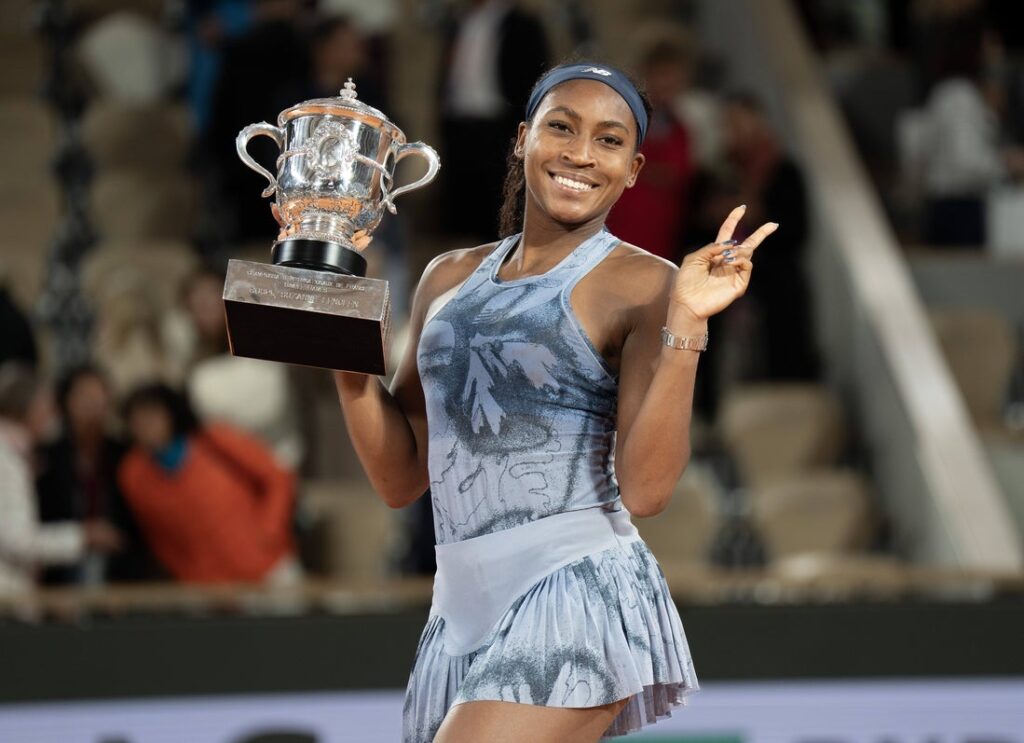
Coco Gauff’s French Open victory over Aryna Sabalenka was the most-watched women’s final at Roland Garros since 2016.
Overall, ratings for the full tournament were up 25 percent in its first year on TNT and TruTV over the 2024 marks on NBC and Tennis Channel.
American star Gauff’s three-set victory over Sabalenka of Belarus averaged 1.47 million viewers, up 94 percent than the previous year (756,000) when Poland’s Iga Swiatek defeated Italy’s Jasmine Paolini.
Serena Williams defeated Spain’s Garbine Muguruza in the 2016 finals when an average of 1.5 millions tuned in.
On the men’s side, Carlos Alcaraz’s marathon five-set victory over Italy’s Jannik Sinner drew 1.8 million viewers, making it the most-watched men’s final since Novak Djokovic defeated Stefanos Tsitsipas in the 2021 finals (1.9 million).
Alcaraz of Spain needed five hours and 29 minutes to outduel Sinner in a drama-filled match.
This was the first season of TNT’s 10-year, $650 million deal to televise the French Open.
–Field Level Media
Sports
Tribe Volleyball Alum Set to Receive Billie Jean King Youth Leadership Award at ESPYs
Amy Schwem, a William & Mary alumni and former Tribe Athletics volleyball player, will be honored at this year’s ESPYs. (Amy Schwem) WILLIAMSBURG — Former Tribe volleyball star Amy Schwem was recognized by the ESPYs Sports Humanitarian Awards as a regional recipient of the Billie Jean King Youth Leadership Award, ESPN announced earlier this week. […]


WILLIAMSBURG — Former Tribe volleyball star Amy Schwem was recognized by the ESPYs Sports Humanitarian Awards as a regional recipient of the Billie Jean King Youth Leadership Award, ESPN announced earlier this week.
The Billie Jean King Youth Leadership Award celebrates and honors young people who use the power of sport as a catalyst for change and make a positive impact on society. There are three Billie Jean King Youth Leadership Award honorees and 20 regional recipients.
Schwem started The Autoimmune Athlete, a platform that functions as a support system for athletes who are battling an autoimmune disease. The Chicago-area native was diagnosed with an autoimmune disease in 2021, a disorder in which the body’s immune system attacks its own healthy tissue. The disease causes a variety of complications, including joint and muscle pain, fatigue, headaches, skin and mouth rashes or ulcers, nausea, and recurring fever. The organization provides education and camaraderie for athletes dealing with autoimmune disease.
“I am exceptionally honored just to have been considered for this award, let alone receive it. When you enter any sort of advocacy work, you never expect any recognition. So when recognition comes, it truly is a chance to shine some light on whatever change you are striving to make. I’m so thankful to have been selected for this award and hope that it will guide others toward The Hidden Opponent and The Autoimmune Athlete who are in need of a community of support,” Schwem said.
Schwem is also on the board of directors for The Hidden Opponent, a nonprofit organization that promotes mental health awareness, education, and support for athletes, and has developed her own merchandise line for The Autoimmune Athlete. She graduated from William & Mary in the spring with a Bachelor of Science in psychology and kinesiology.
On the court, Schwem racked up 2,124 assists as the team’s setter, ranking second-most in the current scoring era (since 2008). She led the Tribe in helpers all four years of her career and is one of seven players to reach the 2,000-assist plateau. She also ranks top-five in career service aces (67) and top-10 in digs (744).
The 11th annual Sports Humanitarian Awards will celebrate and honor athletes, teams, leagues and members of the sports industry who use the power of sport to make a positive impact on society. This year’s Sports Humanitarian Awards returns Tuesday, July 15, at the Ray Dolby Ballroom in Hollywood, California, the evening before the ESPYS, as part of ESPYS Week.
The Awards will be featured in ESPN studio programming and during The 2025 ESPYS, airing live on Wednesday, July 16, at 8 p.m. on ABC from The Dolby Theatre in Los Angeles.
Sports
Arancini calls time on international career
Zoe Arancini has announced her retirement from international water polo, concluding an illustrious 16-year career that has cemented the New South Wales Institute of Sport (NSWIS) scholarship holder as one of the sport’s most respected figures. Arancini made her debut for the Aussie Stingers in 2009 and went on to amass 330 international caps (highest […]
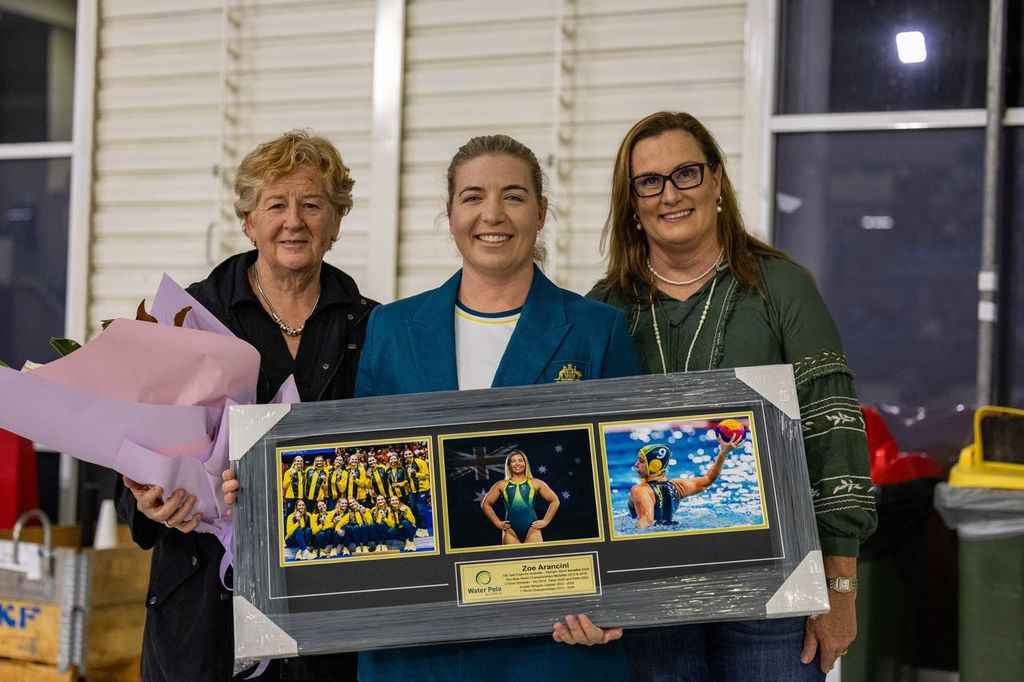
Zoe Arancini has announced her retirement from international water polo, concluding an illustrious 16-year career that has cemented the New South Wales Institute of Sport (NSWIS) scholarship holder as one of the sport’s most respected figures. Arancini made her debut for the Aussie Stingers in 2009 and went on to amass 330 international caps (highest WA female athlete capped), representing Australia at the highest level across four Olympic cycles.
Her career highlights include three Olympic Games appearances – Rio 2016, Tokyo 2020 and Paris 2024 – and seven FINA World Championships, where she claimed a silver medal in 2013 and bronze in 2019. Her career culminated in captaining the Stingers to the silver medal at the Paris 2024 Olympic Games.
Having achieved podium success at every major international competition in world water polo, Arancini said the timing felt right to step away, with the Stingers’ recent Olympic silver providing the perfect bookend to her journey.
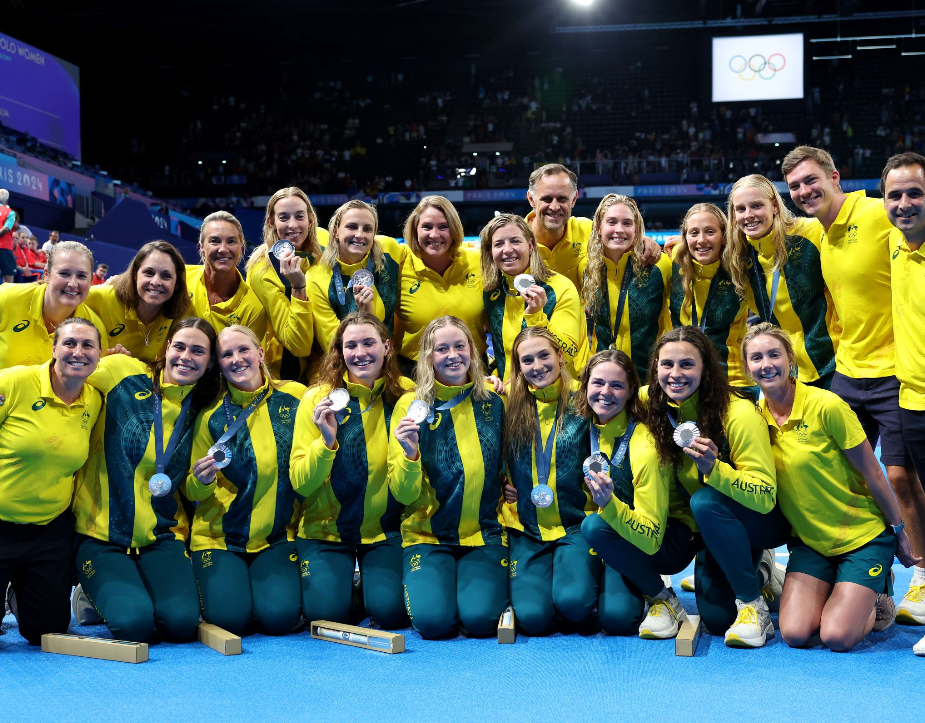
“I’ve done this for 16 years now, and to finish on such an amazing note at Paris 2024 is pretty special,” Arancini said. “I’m ready for the next chapter of my life… I know it’s the right decision because I’m happy, I’m content, and it’s my choice. I’m immensely proud of what we’ve achieved, and I’m so excited for the next generation to step in.”
Reflecting on her journey, Arancini said it’s the people and memories along the way that will stay with her.
“I still remember making the Aussie Stingers squad for the first time – it doesn’t feel that long ago, but it was 2009!” Arancini said. “Winning silver at the 2013 World Championships in Barcelona was incredibly special, especially after missing out on the London Olympics. Then to be selected for Rio 2016 was a dream come true, and to captain the team to silver in Paris 2024 – that’s something I’ll carry with me forever.”
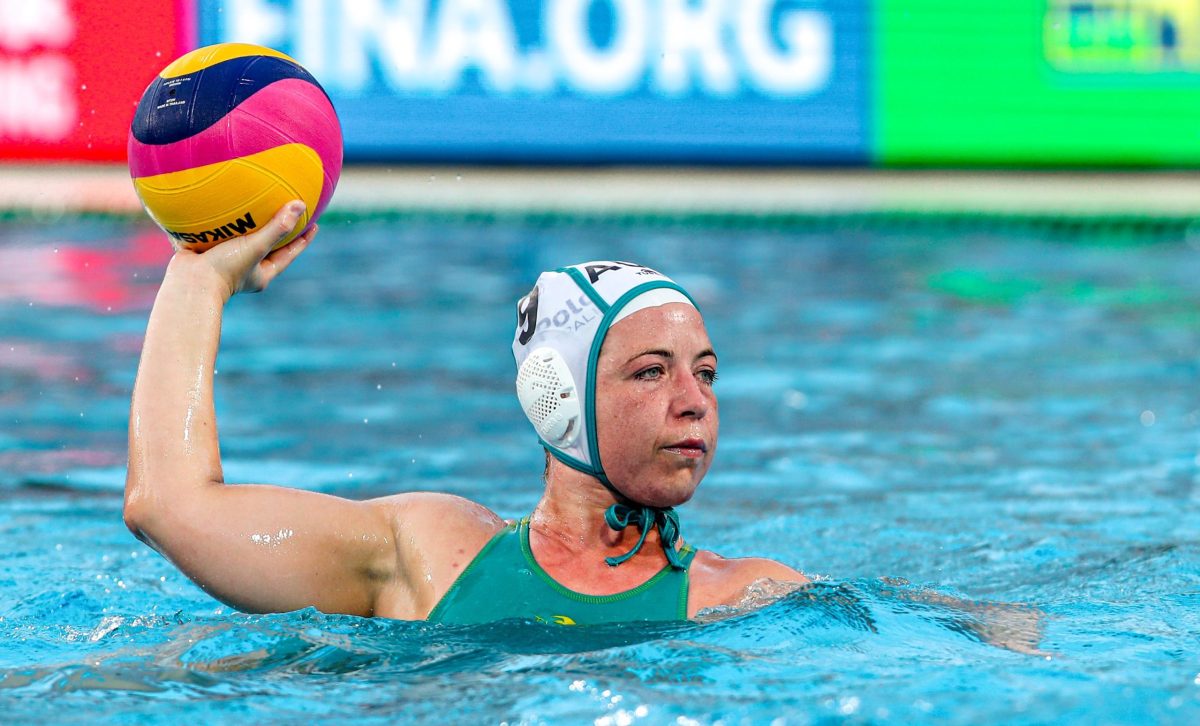
“There have been some amazing and challenging moments that have shaped not only my career but also the person I’ve become. Thank you to everyone who’s played a part in this journey, which started way back when I was a 12-year-old playing Flippa Ball at Melville.”
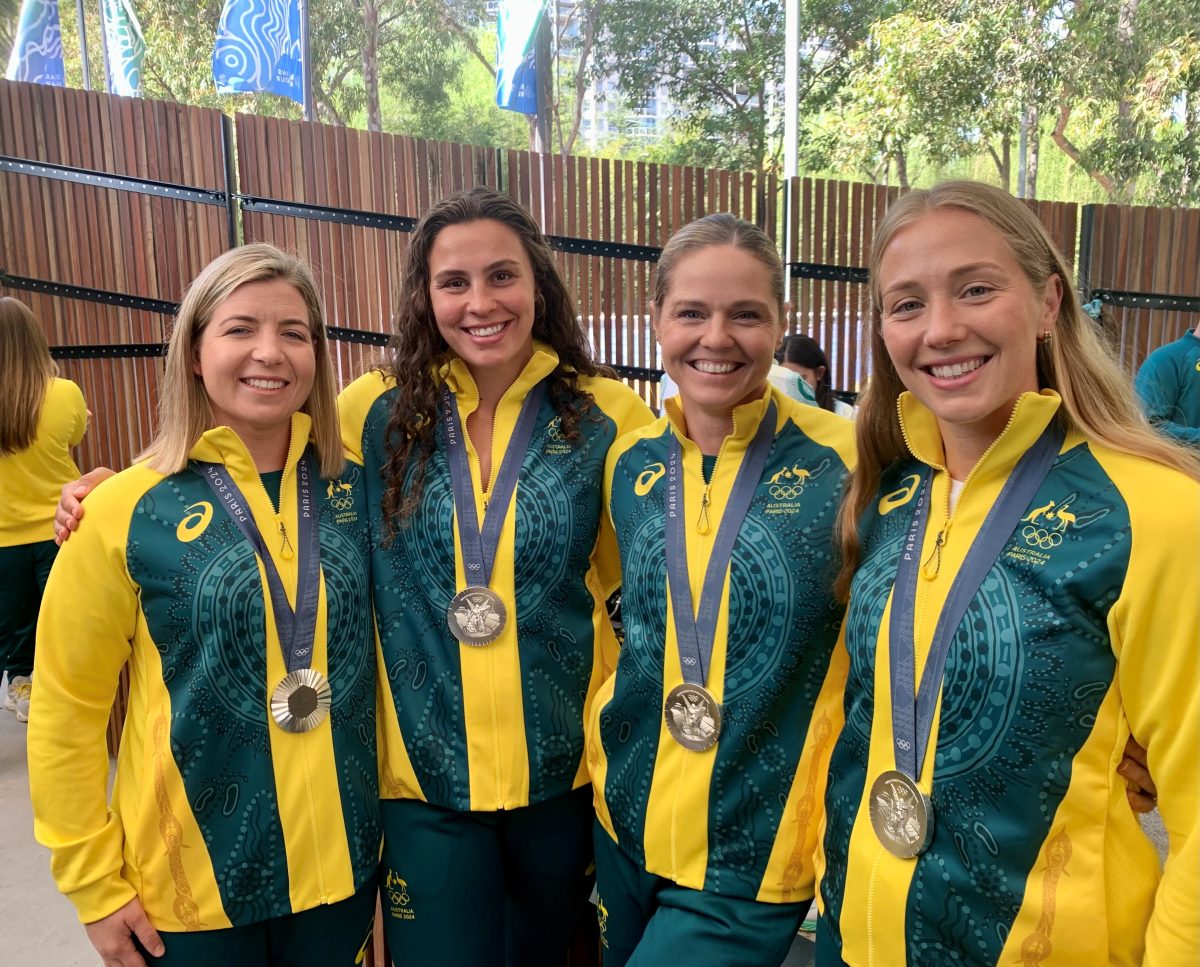
Although stepping back from the international stage, Arancini won’t be lost to the sport. While focusing on her next chapter outside the pool, she will continue to give back by playing domestically for Melville and Fremantle next summer – helping to support and mentor the next generation of Australian athletes.
Sports
Taking Stock 2025: How Arizona Wildcats beach volleyball is looking under Steve Walker
The offseason is here, with all of Arizona’s sports done for 2024-25 season and the 2025-26 campaigns still a little ways away. Which makes this a great time to step back and see how all of the Wildcats’ programs are doing and how they’ve handled the move from the Pac-12 to the Big 12 Over […]

The offseason is here, with all of Arizona’s sports done for 2024-25 season and the 2025-26 campaigns still a little ways away.
Which makes this a great time to step back and see how all of the Wildcats’ programs are doing and how they’ve handled the move from the Pac-12 to the Big 12
Over the next few weeks we’ll take a look at each of the UA’s men’s and women’s athletic programs to see what shape they’re in and what prospects they have for the near future. We’ll break down each team and evaluate how it is performing under its current coaching staff, looking at the state of the program before he/she arrived and comparing it to now while also evaluating how that program fits into its new conference.
Next up: Steve Walker’s beach volleyball team
How it looked before
Walker has been Arizona’s head coach since the UA introduced beach volleyball in 2013. Over the last decade plus, Walker has kept Arizona competitive on a national level, though never quite up there with the sport’s elite programs. Arizona has posted a winning record in every season under Walker’s watch. The Wildcats made the NCAA Beach Volleyball Championship in 2016, the year the sport became sanctioned by the NCAA. Arizona hasn’t made it back to the NCAAs since, in part because it competed in the Pac-12 for the majority of that time, and the league’s auto bid always went to one of the Southern California schools.
Where things stand now
Arizona is coming off an 18-12 season in which it lost all its matches to ranked opponents. The Wildcats went 0-2 against rival ASU, losing at home 4-1 and getting swept in Tempe. It was the first season in program history that Arizona went winless against the Sun Devils. Arizona put one player on the Big 12 All-Conference Team: Ashlyn Zilliken, a rising junior. The Texas native led the team in wins with 21, tied for eighth-most in program history in a single season,
Big 12 vs. Pac-12
By moving to the Big 12, Arizona’s program stands to benefit in the long run by having a better opportunity at securing a precious auto bid to the NCAA Championship. UCLA and USC have dominated beach volleyball since the sport’s inception, and one of the two programs had won every NCAA championship until this year. Maybe it’s Arizona’s luck, but the top power in the sport now resides in the Big 12: TCU. The Horned Frogs won the NCAA title this year and also took home the Big 12 championship. Only four Big 12 teams sponsor beach volleyball: Arizona, ASU, TCU and Utah. Arizona went 0-2 in the Big 12 Tournament, getting swept by ASU and Utah.
One big question
How much will Arizona invest in beach volleyball? Arizona’s 18 wins in 2025 were the program’s fewest since 2017. Part of that could be losing some key seniors from the previous year and having a younger roster overall. However, Arizona’s level of competition last season was a step down from the Pac-12 gauntlet, yet the program won fewer matches. The way the season ended with back-to-back sweeps to ASU and Utah was discouraging. While Walker doesn’t appear to be on the hot seat, it’s not a great look that Arizona is decidedly the third-best program in its own state behind ASU and GCU. In the new college athletics revenue sharing model, Walker needs to prove beach volleyball is a program worth putting serious cash into. The best way to do that would be to improve next season.
Sports
The Clemson Insider
CLEMSON — When it comes to the new revenue sharing piece, plus giving more student-athletes fully funded scholarships, Clemson is all-in. Clemson athletic director Graham Neff told Mickey Plyler recently on the Mickey Plyler Show on The Roar 105.5 FM, that Clemson will fund 150 new scholarships for the 2025-’26 academic year. “That is $4-6 […]

CLEMSON — When it comes to the new revenue sharing piece, plus giving more student-athletes fully funded scholarships, Clemson is all-in.
Clemson athletic director Graham Neff told Mickey Plyler recently on the Mickey Plyler Show on The Roar 105.5 FM, that Clemson will fund 150 new scholarships for the 2025-’26 academic year.
“That is $4-6 million that are all supported through IPTAY, (in addition to) the maximum revenue distribution,” Neff said. “So, schools that are able to pull all of those levels, like we are, that is where the support, the resources and the competitive expectations we have for that are significant.”
Clemson Athletics is at the top of the pyramid when it comes to the amount of dollars a school can lean in, especially when it comes to the scholarship piece.
“We are increasing scholarships for all 21 of our sports and, essentially, fully fund new scholarships for most all of our sports,” Neff said. “Really rowing and track and field are the two programs that will not be fully funded (in scholarships), but those are huge roster sports. Rowing has 50 and track and field has 90 between men and women, but both of those programs will essentially have increased scholarships.
“All of our other sports will be fully funded for scholarships, that means baseball, softball, lacrosse and soccer, all of them.”
Neff pointed out, being able to fully fund scholarships in all but two programs is a big deal and gives Clemson a competitive advantage in a lot of ways to its peers.
“That is a huge deal, and we are leaning into that significantly,” he said. “There are not a whole lot of schools that are able to do that, so that is a testament and leverage from IPTAY and our IPTAY donors.
“We will continue to ask for support in a very traditional manner with IPTAY, scholarships and academic support.”
Though Clemson will distribute the maximum $20.5 million to its student athletes this year, in accordance with the House Settlement, Neff explained that the sports that brought in the revenue are the ones that will mostly benefit from it.
“We are all-in to the full amount and now its about how we are going to (distribute) that, and that gets into a local decision of how you allocate that $20 million,” he said. “You can allocate it all to one sport. You can chop it up.
“Our method is to align it where our revenues are generated from. Obviously, here at Clemson, it is heavily football, basketball and baseball. These (sports) are where our revenue is generated from, so the allocation of that $20 million is going to be proportional to where we generate our revenue.”
Taking it one layer deeper, the individual programs will then decide how much the student athletes get from their particular sport.
“Now we get into our coaches and our support staff to ultimately allocate those dollars per team,” Neff said. “So, we have central administrative support mechanisms, analytics and positional values (to help).
“We really equipped our coaches in football and all of them with resources and strategy around them. That is where you get into the professionalism of college athletics more and more, but that layered approach is where we are seeing those results in recruiting and retention.”
Sports
Hull stars in race bound for the history book
Australia’s track stars made their presence known at the 50th edition of the Prefontaine Classic, as Olympic silver medallist Jessica Hull a New South Wales Institute of Sport (NSWIS) scholarship athlete, led the charge with a podium finish in the fastest 1500m ever run, while four fellow Australians stepped up against world-class fields in Eugene’s […]

Australia’s track stars made their presence known at the 50th edition of the Prefontaine Classic, as Olympic silver medallist Jessica Hull a New South Wales Institute of Sport (NSWIS) scholarship athlete, led the charge with a podium finish in the fastest 1500m ever run, while four fellow Australians stepped up against world-class fields in Eugene’s iconic Diamond League meet.
In a race destined for the history books, Hull rose to the moment, clocking 3:52.67 to finish third in the Women’s 1500m for the third fastest time of her career.
Competing in what became the fastest women’s 1500m race in history with the deepest field assembled this year, Hull held her composure as Kenya’s Faith Kipyegon stormed to a new world record of 3:48.68. Hull refused to be rattled by the searing pace, staying attached to the lead group deep into the bell, before yielding only to Kipyegon and Ethiopia’s Diribie Welteji in the final 200m.
The result not only marked Hull’s quickest performance of the season, but it reinforced her place on the podium of global middle-distance running.
“I was actually quite surprised how easily I got my position. To get the position right off the line was super nice, and then I just tried to stay relaxed. Then I felt Faith, she put her foot down and made it really hard for that last 500m,” Hull said.
“This was the fastest 1500m I’ve been in all year, so it was definitely tough in that last 400m, but I’m okay with that being tough at this point of the season. It was really important to get a really fast one under my belt and build from here. I
“t’s pretty impressive what Faith can do, she’s set the benchmark now of where we need to be come Tokyo, so yeah, I’ll go back to work and try and get there.”
Nineteen-year-old sensation Cameron Myers (ACT) continued to defy expectations at the Bowerman Mile, clocking 3:47.50 to finish sixth in a stacked field, and falling just 0.02-seconds shy of breaking his own World Under 20 and Australian record.
Mixing it with global medallists and Diamond League champions, the Canberran ran with poise beyond his years, as USA’s Yared Nuguse took charge of the race before being pipped at the finish line by The Netherland’s Niels Laros who stole victory from the Olympic bronze medallist with a national record of 3:45.94.
For the equal Australian record holder Oliver Hoare (NSWIS), it was a tougher outing in Eugene, with the Commonwealth champion finishing 15th in 3:51.60. Also racing the mile, albeit in a different race and a different field in the pre-event program, Adam Spencer (VIC) placed fourth in a field of 16, running a lifetime best of 3:50.19, missing the Tokyo qualifying standard by 0.19-seconds.
Returning to the track from injury, Australia’s fastest man Lachlan Kennedy (QLD) seized his moment in the Men’s 100m, racing to 10.07 (+0.4) to finish seventh in one of the fastest fields assembled this season.
Lining up against the world’s premier sprinters including first and second-place getters Kishane Thompson (JAM, 9.85) and Zharnel Hughes (GBR, 9.91), the Australian held his own, crossing the line just behind world champion Christian Coleman (USA, 10.06).
The performance adds to a breakthrough year for Kennedy, who continues to rise among sprinting’s elite ahead of the Tokyo World Championships.
The Diamond League Series continues next week in Monaco, France on July 11, with an all-star Australian cast set to line up for the prestigious meet.
Hull will return for the 1000m alongside Sarah Billings, while teenager Gout Gout will make his Diamond League debut in the Under 23 200m, and Peter Bol and Kurtis Marschall will wave the Australian flag in the 800m and Pole Vault respectively.
Sports
Curtis Pride details his baseball career in new book
“I Felt the Cheers: The Remarkable Silent Life of Curtis Pride,” by Curtis Pride with Doug Ward, Kensington Books, 226 pages It was just another late season Major League Baseball game in Montreal in 1993 when Expos rookie Curtis Pride delivered the first hit of his career. The fans, as is custom, stood and applauded […]
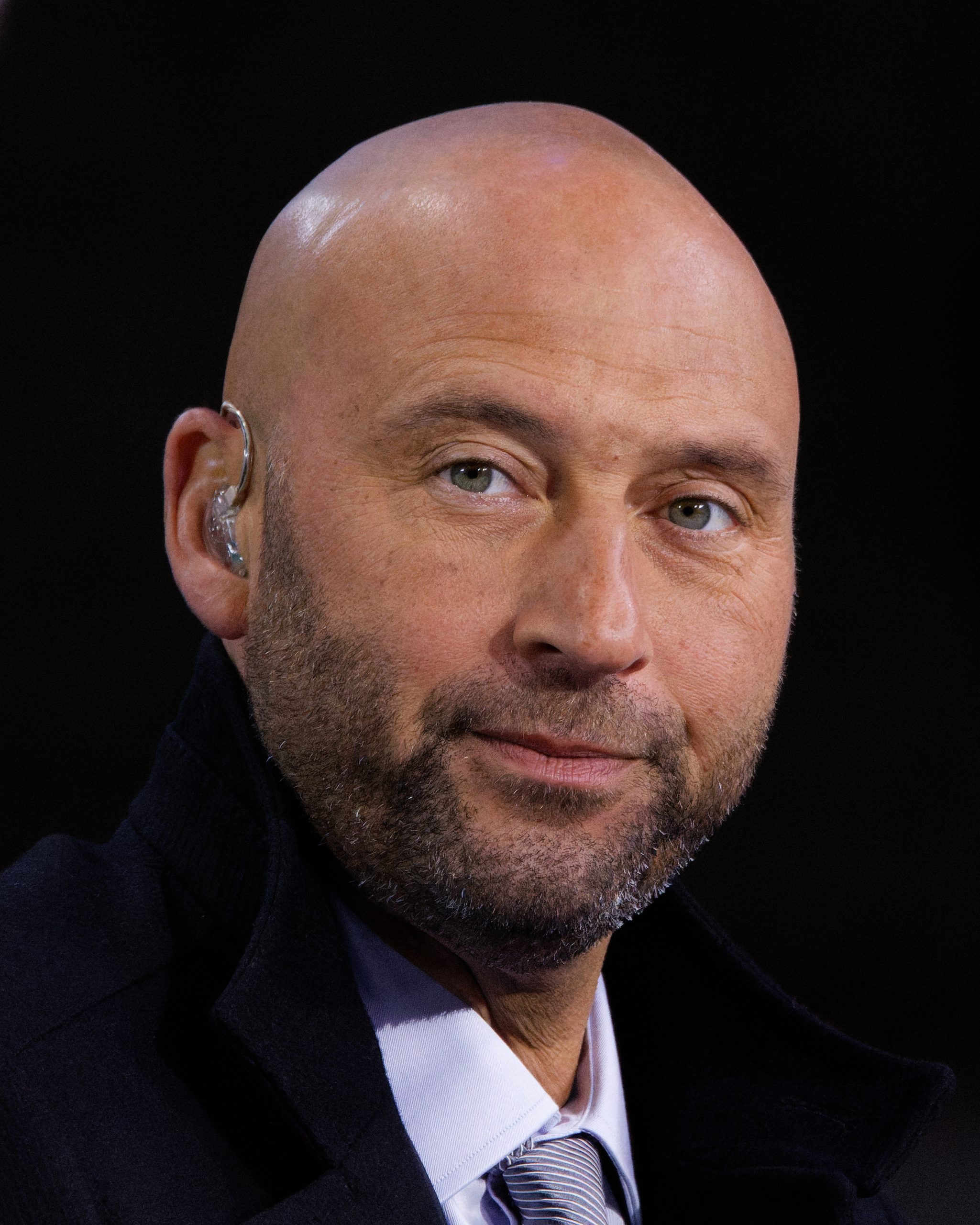

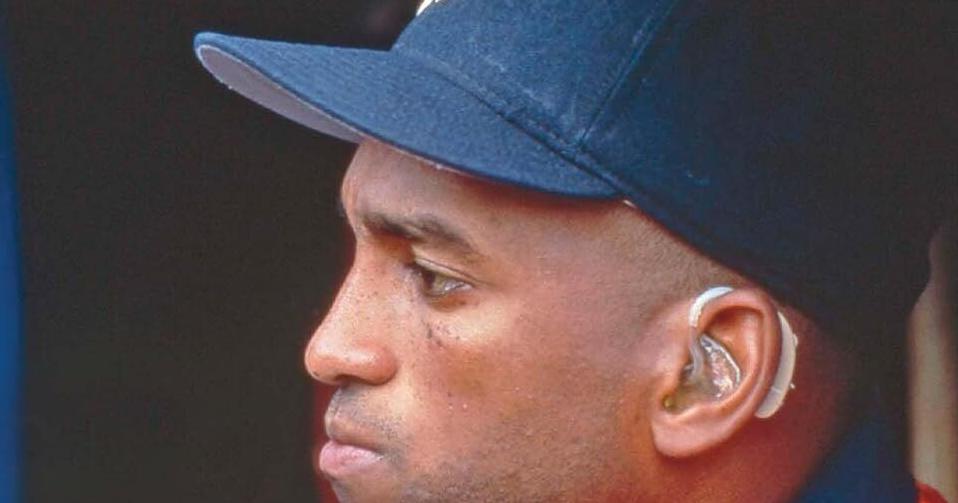
“I Felt the Cheers: The Remarkable Silent Life of Curtis Pride,” by Curtis Pride with Doug Ward, Kensington Books, 226 pages
It was just another late season Major League Baseball game in Montreal in 1993 when Expos rookie Curtis Pride delivered the first hit of his career.
The fans, as is custom, stood and applauded the feat. Pride, after all, came off the bench to double in two runs in the eighth inning to cut the visiting team’s lead that night to one.
But on this night, the fans kept cheering. And they got loud.
By then, fans were aware of Pride, who was born deaf. He was three days removed from becoming the first deaf player to reach the majors in nearly 50 years. The Phillies then brought in a new pitcher, but the roar of the 45,000 that night in Montreal — yes, Montreal — only grew.
Pride stood on second base and had no idea how loud it was. Third base coach Jerry Manuel came out and advised him to tip his helmet to acknowledge the crowd, so he did.
But they kept cheering.
“I still didn’t notice,” Pride said.
It wasn’t until an umpire advised him to smile that he realized the gravity of the situation. The moment serves as a focal point in his recently released autobiography, “I Felt the Cheers: The Remarkable Silent Life of Curtis Pride.”
He describes in detail how that moment validated his years of hard work in the minor leagues, the odds he overcame being deaf and all the people who helped him along the way. Pride might be most known for being a deaf baseball player, but there was so much more to his career than that game.
While he was never an everyday player, he had several notable accomplishments that are chronicled in the book — like the time he hit a pinch-hit home run in his first game with the Boston Red Sox or when he homered in his first game as a New York Yankee. Former professional baseball pitcher Greg Maddux credits Pride — who mastered lip-reading as a child — for the trend of pitchers and catchers covering their mouths during meetings on the mound to keep their conversations private.
Pride’s book is also a testament to the power of humans helping other humans. He identifies those who played a significant role in his development, starting with his parents, his first little league coach and a minor league manager who was there that night in Montreal.
Pride, who spent years as head baseball coach at Gallaudet University after a 22-year pro career, spoke with the newspaper about his book.
The interview was conducted using a program that provides closed captioning. It has been edited for clarity.
It’s been about 20 years since you retired from baseball. What led you to write a book at this point?
When I was playing professional baseball, I had a lot of people coming up to me asking if I had a book. It was interesting to them how I dealt with my deafness. Toward the end of my career, more people — people from the deaf community, teammates and coaches — asked me.
So I thought it was a good time to share my life journey with the public and hopefully inspire them.
Take me back to that night in Montreal. That was before the internet, but now the video of it has taken on a life of its own. Do you still get people asking you about it?
It was very emotional and very surreal. It’s something I will never, ever forget. I had a lot of people come up to me after the game. I would walk in downtown Montreal, and people would come up to me and say it was an experience they’ll never forget. To this day people still talk about how it made a huge impact on their lives.
Watch the video of Pride’s first hit by clicking here.
As a hearing person, I was unaware that deaf people often deal with a misconception that they are not smart. You talk about dealing with that over your career. Can you tell me more about that?
It’s a common misconception. William “Dummy” Hoy was the first deaf player in the major leagues, and he was called Dummy because people thought he was dumb just because he couldn’t hear.
I would have to constantly prove to people that just because I have a hearing loss doesn’t mean I’m not smart. I had a good GPA in high school and graduated from one of the top colleges in the country, William & Mary.
You reference by name the people who were instrumental in your development, but the biggest I thought were your parents. How much impact did they have on your career?
My mom sacrificed her nursing career to raise me and make sure I had all the resources necessary to become a productive person in society. My dad has been a big advocate, always helping me make sure I knew what was going on. My dad wanted to sign me up for T-ball, but they wouldn’t let me play because I was deaf and Black.
My dad threatened to file a legal suit. My dad has been with me making sure I understand the rules of the game and there was no miscommunication between the coaches and me.
For years I considered you a baseball journeyman, someone who sought out teams to play for. But now I think you were a journeyman because teams sought you out. How would you analyze your career?
It’s a tough business. To be able to come back from independent ball to the major leagues, that’s an incredible feat. When you go to the independent leagues, most people write you off, especially the age I was then.
I was looking ahead, doing my thing, staying positive and playing the game the right way at all times. I’ve had coaches tell me, “Man, I love the way you play. You play the game hard and the right way.” So I guess I set a good example.
-

 College Sports1 week ago
College Sports1 week agoWAC to Rebrand to UAC, Add Five New Members in 2026
-

 Technology3 weeks ago
Technology3 weeks agoPolar is teasing a Whoop alternative without subscription
-

 Motorsports6 days ago
Motorsports6 days agoWhy Cosmetics are Making Up for Lost Time in Women’s Sports
-

 Technology3 weeks ago
Technology3 weeks agoI loved the Whoop MG, but didn’t love the price: that’s why I’m excited about this mysterious new fitness band from a major Garmin rival
-

 NIL3 weeks ago
NIL3 weeks agoGo Straight to Collective Bargaining (Part II) ✦ OnLabor
-

 College Sports3 weeks ago
College Sports3 weeks agoLocked On Women's Basketball
-

 Professional Sports2 weeks ago
Professional Sports2 weeks agoAlex Pereira responds to rumors of UFC heavyweight title fight with threatening message
-
College Sports2 weeks ago
Women's Basketball Thanks Shannon LeBeauf for 14 Seasons
-

 College Sports2 weeks ago
College Sports2 weeks agoAlabama Basketball
-

 Technology1 week ago
Technology1 week agoPet fitness and wellness trends for a healthier and happier dog








 Get your tickets today!
Get your tickets today!


























